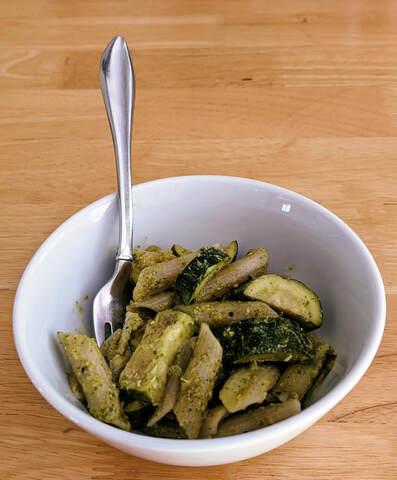
Whenever I talk to friends who garden, every single one of them, no matter where they live, mentions how plentiful zucchini are. Some of them say they have such a bumper crop that they resort to creative tactics for unloading it on unsuspecting neighbors. This includes loading up a bag with zucchini and leaving it hung on the front door or leaving a bag on the porch. Should you be the lucky recipient of such vegetable abundance, fret not, because today I have a recipe that will have you rejoicing at your good fortune instead of shaking your fist saying, "Not more zucchini!"
Now this recipe is not only good if you have zucchini lying around, it's also good for hot summer days because it doesn't require you to turn on the oven. I am grateful for this because I live in North Carolina, where, as I have mentioned before, some residents refer to the worst of summer as "Hell's Front Porch," or what I call "Satan's Sauna."
You can put as much or as little effort into this dish as you desire. And if you are hot, or worse, hot and tired, you probably don't have a lot of energy to invest in making dinner. You can make your own pesto or you can buy some at the store. You can grill the zucchini*, or pan sauté it, or, depending on how much you make, roast it in a toaster oven. You can put a cheese grater and a hunk of cheese on the table or you can buy pre-grated cheese. I won't judge. The important things to remember are that the recipe doesn't use the oven, it comes together quickly, it uses a lot of zucchini (if you need it to), and IT'S DELICIOUS! Like so delicious that I don't want to share the leftovers with my husband. So go make this dish, and oh, things come together very quickly at the end!
Zucchini Pesto Pasta
Serves 4-6
First, make the Pesto (or buy a jar at the store):
4 ounces fresh basil, de-stemmed, washed and dried.
⅓ cup pine nuts, toasted
⅓ cup grated Parmesan or Pecorino Romano, loosely packed in the measuring cup
½ small lemon, juiced
½ teaspoon of ground black pepper
½ teaspoon of kosher or sea salt
⅓ cup of good quality extra virgin olive oil
In a food processor, pulse the basil and pine nuts 10 times. Add the cheese, salt, pepper, lemon and pulse to combine. Turn on the food processor and add the olive oil slowly through the feed tube. Taste. If it tastes a little flat, add another squeeze of lemon juice. Add salt and pepper to taste. Process once more.
Storage: In a covered container in the refrigerator for up to four days or in the freezer for two months.
Second, make the pasta and zucchini.
Water and salt for the pasta
10-12 ounces of penne pasta (or whatever pasta shape you prefer)
4 small to medium zucchini, washed, ends trimmed, cut into large 1-inch pieces
Good quality extra virgin olive oil
Sea salt and freshly ground black pepper
Fill a large pot 3/4 full of water (I use a 5-quart dutch oven), add 2 teaspoons of salt, and bring to a rolling boil.
While the water is heating up, heat a skillet over medium low. Pour in 2 tablespoons of olive oil, add the zucchini, and cook until nearly tender. Season with salt and pepper. Stir infrequently so that the zucchini has a chance to become light golden brown on the outside. Cooking the zucchini will take a good 10-15 minutes. Once the zucchini are done cooking, you may have a couple minutes left on the pasta, so reduce the heat under the zucchini to low until ready to put it in the final pasta dish.
Cook the pasta according to the manufacturer's directions. And here's where I tell you that I always cook it 30 seconds less than that for perfectly al dente pasta. VERY IMPORTANT: 1 to 2 minutes before the pasta is finished cooking, reserve some pasta water by ladling a cup or two of pasta water into a heat proof measuring cup with a pour spout.
While the pasta and the zucchini are cooking, prepare for everything that happens right at the end. Put a colander in the sink. Have olive oil nearby. Near the end of cooking the pasta reserve some of the cooking water.
Once the pasta has reached desired doneness, it's go time! Drain the pasta into the colander. Pour a tablespoon or two of the good olive oil back into the pot and swirl the pot to cover the bottom. Then add the pasta, and stir to coat it with olive oil. Put the pot back on the stove over very low heat. We're done cooking the pasta so the heat is just to keep it warm. Next add the pesto and stir so that all the pasta is covered.
Now, the magic happens. Add a little bit of the pasta water, no more than 1/4 cup, to the pot, and stir to create a creamy pesto sauce. If it's too thick, add a little more pasta water, stir, and determine if you need more. When the sauce is coating each piece of pasta, and it looks good to you, stop adding water. Add the zucchini and stir to combine. Let's eat.
I recommend serving this in shallow bowls and passing cheese at the table.
* If you choose to grill the zucchini, follow the instructions in this recipe, but skip the tahini sauce. When the zucchini is done, cut it into small bite-size pieces, and add it to the pasta after the pasta has been coated with the pesto sauce.

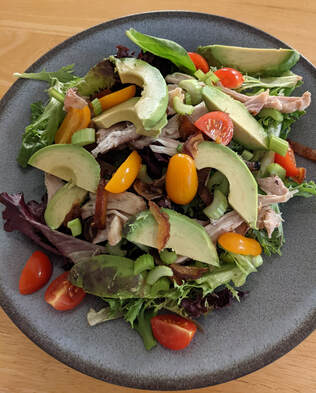

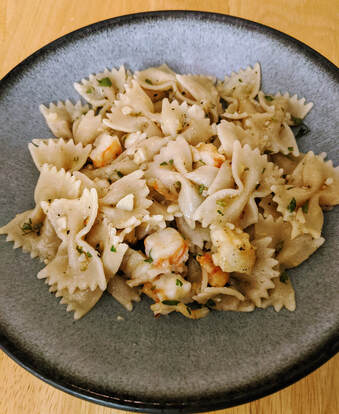
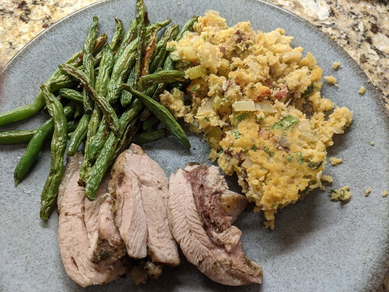

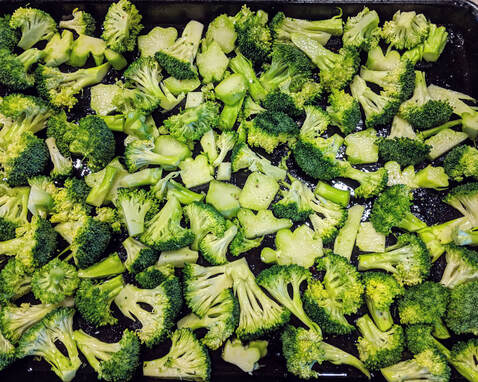
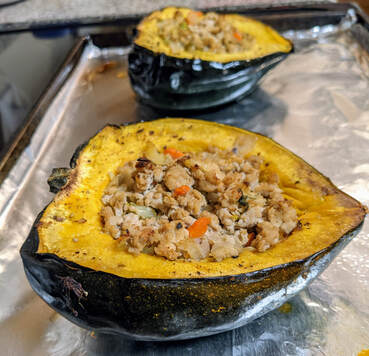
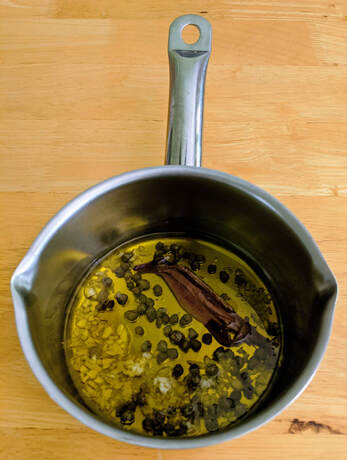
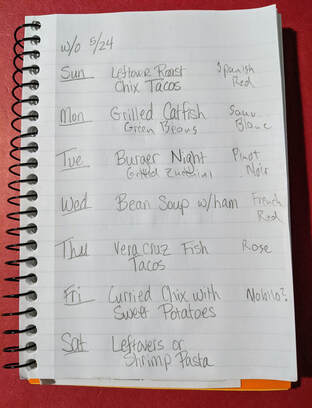
 RSS Feed
RSS Feed